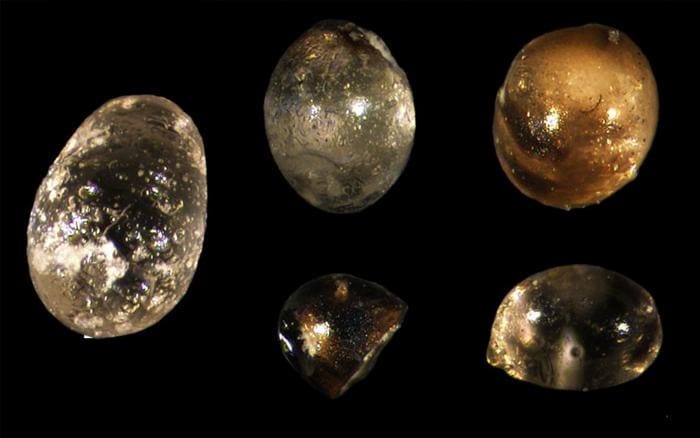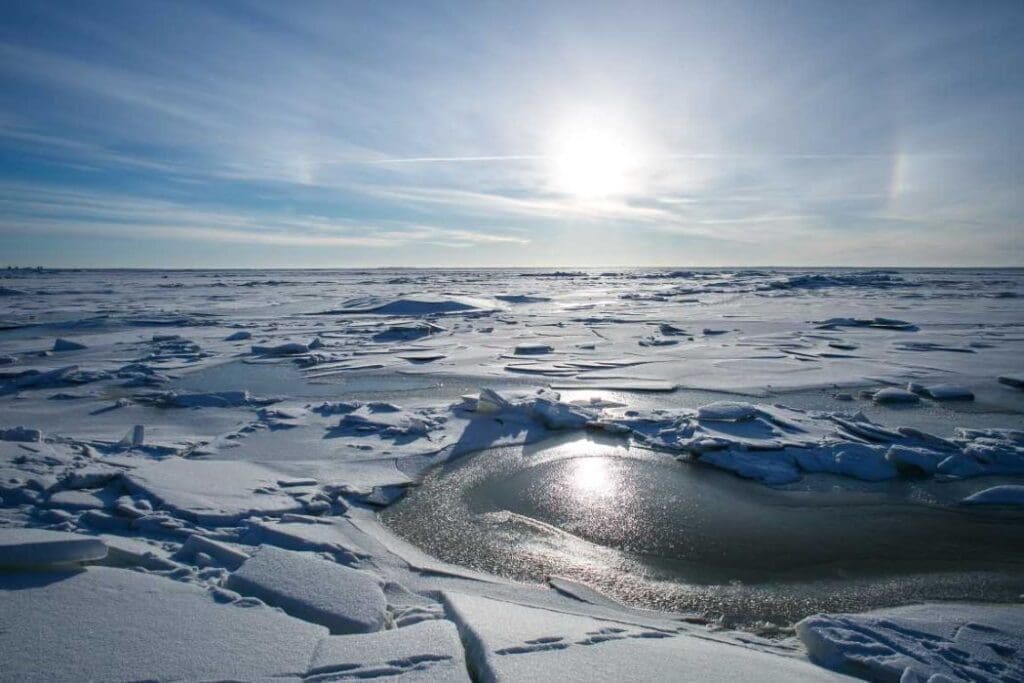Explore the latest insights from top science journals in the Muser Press daily roundup, featuring impactful research on climate change challenges.
Table of Contents
Boosting food security with climate-ready potatoes
A team at the University of Illinois, part of the Realizing Increased Photosynthetic Efficiency (RIPE) project, has developed potatoes that demonstrate increased resilience to high temperatures. Field trials showed a 30% increase in tuber mass during heatwave conditions, suggesting significant potential to mitigate food insecurity in regions most vulnerable to climate change.

“We need to produce crops that can withstand more frequent and intense heatwave events if we are going to meet the population’s need for food in regions most at risk from reduced yields due to global warming,” said Katherine Meacham-Hensold, scientific project manager for RIPE. “The 30% increase in tuber mass observed in our field trials shows the promise of improving photosynthesis to enable climate-ready crops.”
The team’s findings, recently published in Global Change Biology, emphasize the potential of genetically engineering crops to bypass energy-intensive photorespiration, a process that can diminish yields by up to 40%.
By incorporating two new genes, glycolate dehydrogenase and malate synthase, the researchers enabled the modified potatoes to metabolize photorespiration’s toxic byproducts within the chloroplast, conserving energy and enhancing growth. During extreme heat events in 2022, modified potatoes outperformed controls, producing 30% more tuber mass.
Importantly, the modifications did not affect nutritional quality, addressing concerns over caloric and nutrient balance in global food security. RIPE’s success with potatoes could extend to other staple crops like cassava, vital in regions facing escalating climate challenges.
Journal Reference:
Katherine Meacham-Hensold, Amanda P. Cavanagh, Peyton Sorensen, Paul F. South, Jessica Fowler, Ryan Boyd, Jooyeon Jeong, Steven Burgess, Samantha Stutz, Ryan N. Dilger, Moonsub Lee, Nicholas Ferrari, Justin Larkin, Donald R. Ort, ‘Shortcutting Photorespiration Protects Potato Photosynthesis and Tuber Yield Against Heatwave Stress’, Global Change Biology 30 (12) e17595 (2024). DOI: 10.1111/gcb.17595
Article Source:
Press Release/Material by Carl R. Woese Institute for Genomic Biology | University of Illinois at Urbana-Champaign
Asteroid impacts in Earth’s history lacked long-term climate effects
A study by University College London researchers has revealed that two massive asteroid impacts 35.65 million years ago had no enduring impact on Earth’s climate, despite their catastrophic local effects. These impacts, which created Siberia’s Popigai crater, Russia, and the Chesapeake Bay crater in the United States, occurred 25,000 years apart.
The study, published in Communications Earth & Environment, analyzed isotopes from fossils of marine organisms to track ancient ocean temperatures.

“What is remarkable about our results is that there was no real change following the impacts,” said Professor Bridget Wade (UCL Earth Sciences). “We expected the isotopes to shift in one direction or another, indicating warmer or cooler waters, but this did not happen. These large asteroid impacts occurred and, over the long term, our planet seemed to carry on as usual. However, our study would not have picked up shorter-term changes over tens or hundreds of years, as the samples were every 11,000 years. Over a human time scale, these asteroid impacts would be a disaster. They would create a massive shockwave and tsunami, there would be widespread fires, and large amounts of dust would be sent into the air, blocking out sunlight.”
While short-term disasters like shockwaves and tsunamis likely occurred, the study found no significant long-term shifts in climate over the 150,000 years following the impacts.
The research examined over 1,500 fossils of foraminifera from a Gulf of Mexico core sample. By analyzing isotopes from both surface and seafloor species, the team uncovered a 2°C warming of surface waters and a 1°C cooling in deep waters about 100,000 years before the impacts, but no changes tied to the asteroid events themselves.
The findings highlight the complexity of Earth’s climatic responses and reinforce the need for asteroid monitoring. “We still need to know what is coming and fund missions to prevent future collisions,” Wade added.
Journal Reference:
Wade, B.S., Cheng, N.K.Y., ‘No paleoclimatic anomalies are associated with the late Eocene extraterrestrial impact events’, Communications Earth & Environment 5, 710 (2024). DOI: 10.1038/s43247-024-01874-x
Article Source:
Press Release/Material by University College London
Harnessing methane: New catalyst turns a greenhouse gas into polymers
MIT chemical engineers have developed an innovative catalyst that captures methane, a potent greenhouse gas, and converts it into polymers at room temperature and atmospheric pressure. Methane, although less prevalent than carbon dioxide, traps more heat in the atmosphere, exacerbating global warming. Agriculture, landfills, and natural gas operations are among its primary sources.
The new catalyst, detailed in Nature Catalysis, pairs a zeolite (iron-modified aluminum silicate) with alcohol oxidase, an enzyme. This hybrid system enables a two-step process: methane is converted to methanol and then to formaldehyde. Unlike traditional methods that require high energy inputs, this system operates efficiently in water, utilizing hydrogen peroxide generated during the reaction.
“Other systems operate at high temperature and high pressure, and they use hydrogen peroxide, which is an expensive chemical, to drive the methane oxidation,” says Jimin Kim, co-lead author of the study. “But our enzyme produces hydrogen peroxide from oxygen, so I think our system could be very cost-effective and scalable.”
The formaldehyde produced can then be used to make urea-formaldehyde polymers, widely employed in manufacturing particle boards and textiles. Future applications include coating methane-exposed surfaces or incorporating the catalyst into natural gas transport systems to produce sealant polymers.
Strano’s lab is now working on catalysts that could be used to remove carbon dioxide from the atmosphere and combine it with nitrate to produce urea. That urea could then be mixed with the formaldehyde produced by the zeolite-enzyme catalyst to produce urea-formaldehyde.
Journal Reference:
Lundberg, D.J., Kim, J., Tu, YM. et al. ‘Concerted methane fixation at ambient temperature and pressure mediated by an alcohol oxidase and Fe-ZSM-5 catalytic couple’, Nature Catalysis (2024). DOI: 10.1038/s41929-024-01251-z
Article Source:
Press Release/Material by Massachusetts Institute of Technology
Exploring Antarctica’s underwater avalanches and their climate role
For the first time, scientists are set to study Antarctica’s turbidity currents – underwater avalanches that play a key role in carbon cycling. These events, which transport sediment and organic material across vast distances, have remained poorly understood despite their significance to the global climate.

The Antarctic Canyon Experiment (ACE), led by Dr. Jenny Gales from the University of Plymouth, will investigate how these currents contribute to Antarctica’s role as a major carbon sink. The Southern Ocean currently stores about 40% of anthropogenic carbon, making it critical for mitigating global warming.
“Turbidity currents, also known as underwater avalanches, are natural hazards that can transport huge amounts of sediment that travel thousands of kilometres across the ocean,” explains Dr. Gales. “They can damage infrastructure, such as the underwater cabling that transports most of the world’s internet, but are also of critical importance in the global carbon cycle. However, the exact scale of that is something of a mystery and through this project we hope to generate the first detailed understanding of how these currents take shape around Antarctica. Given its disproportionate role in the global climate, that information will be vital in helping us predict what might happen unless we take immediate action to halt the advance of climate change.”
The project, supported by a €2.4 million grant from European Research Council, will involve researchers from institutions across Europe, the USA, and Australasia. Using advanced technologies such as autonomous underwater vehicles and sediment traps, the team will monitor Antarctic canyons over five years to measure sediment movement and organic carbon content.
By providing the first comprehensive insights into these processes, the ACE team hopes to refine global carbon models and inform climate policies. The findings are expected to redefine understanding of high-latitude turbidity currents and their role in regulating Earth’s climate.
Article Source:
Press Release/Material by University of Plymouth
Featured image credit: Gerd Altmann | Pixabay




